This Week in Games
Isekai Gaming
by Jean-Karlo Lemus,
Welcome back, folks! My long President's Day weekend turned out to be a bit longer than normal: we got snowed in from a freak winter storm (we sometimes get those in February up here). I was able to have a nice rest this past weekend; I did some scrapbooking with my collection of stickers, and I even finished reading Xiran Jay Zhao's Iron Widow (I need to read the other books in the series). I'm anxious for con season; I strongly desire to host another History of Japanese Superheroes panel over the weekend. At any rate, let's talk news!
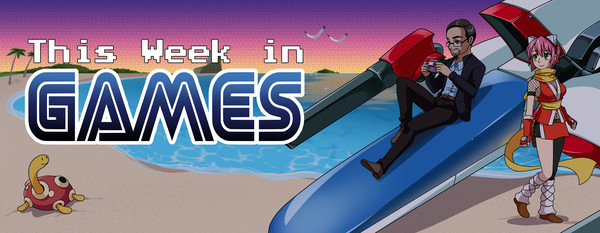
About Elden Ring: Nightreign...
This past weekend, I got an access code for the Elden Ring: Nightreign network test! Sadly, the test didn't allow me to take screenshots—truly a shame; there were more than a few fun instances in there I'd have liked to immortalize. But I can narrate most of what I went through pretty easily.
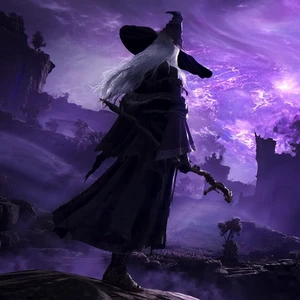
Unfortunately, the Recluse still needs FP to use their spells, and while she can equip other weapons, she won't be of much use with a big poleaxe or a zwiehander. The most complicated weapon I would use with her, assuming I could find one, would be a bow or a whip. This is problematic because Magical Cocktail only works if you've struck an enemy with an attribute. If you're against a boss, your teammates are dead, and you don't have a spare whip or bow, you're effectively done. (Doubly so if the third member of your team got disconnected, it's just you and the knocked-out Guardian.)
Nightreign is still a blast to play. You have limited time to explore a dwindling map within a territory, attacking roving bands of monsters for Runes to level up your character and scrounging for materials and weapons. If you happen upon a Named Enemy, you can fight them for extra runes or rare equipment. But that timer is a constant threat; like any other battle royale game, once the wall catches up to you, you'll start running out of health until you die. If you die, you take a penalty to your experience level. On one run, my team found a hill dragon and set to work fighting it, but the fight took too long, and we had to abandon it once the wall caught up to us. The other enemies you can find are critters you encounter in Elden Ring, like the Flame Chariots or the Glintstone-wielding Scholars. If you should ever die against one, it's just a matter of your teammates whacking you a few times to get you back on your feet.
So far, it's not too clear what happens between runs. After each go, I earned some Relic currency as well as a handful of Relics that I could equip to my characters. But these were limited. I have no clue if you'll be able to tailor the designs or starting equipment to your characters in any way. Nevertheless, Nightreign is looking good! We were all a bit antsy at the idea of a battle royale Elden Ring, but it plays well, and it's easy enough to work with your teammates in-game. The network seemed relatively stable (barring two runs where our third would just vanish). It's not a full Elden Ring sequel, and it's not Bloodborne 2, but Elden Ring: Nightreign is fun. I think that's good enough for now. Look forward to its release on May 30!
SNK Reveals Season Pass DLC Line-Up
Street Fighter 6 has done gangbusters with its inclusions of Fatal Fury's Terry Bogard and Mai Shiranui into their roster; they've made all kinds of amazing effort to render tribute to how they played in their own games while also just making them fun additions to the roster in general. Capcom even went the extra mile to add in unique flourishes with Terry and Mai that hearken back to Fatal Fury's Lane system, that's love right there. It's very ballsy to have SNK's most-famous starlet finally tie the knot with her long-running romantic interest, for realsies in a cameo appearance done in a Capcom game. SNK revealed their upcoming DLC season pass this past week and the goodies within, so let's see how SNK will respond:
SNK and Capcom have confirmed Ken Masters and Chun Li for the DLC wave. They had this one in their collective back pockets for a while as a student exchange program. Chun Li's inclusion is obvious: dubbed "The Strongest Woman in the World," she's also possibly the most important woman in Street Fighter, a trailblazing character in terms of female representation in gaming and an all-around icon. The Capcom Vs. SNK games (if not Street Fighter 6) has long documented her ongoing friendship with Mai Shiranui, so bringing her in is a no-brainer.
Now, Ken...? That's a bit of a puzzler. The obvious question would be why he's being chosen over Ryu, the long-running protagonist of the Street Fighter games and arguably the face of fighting games at large. Ryu is already known to be a world traveler, constantly seeking new challenges. Ken might be his buddy, but he's right up there with Luigi Mario in terms of being a second-banana. Ken's origins lay with him being a P2 color scheme for Ryu way back in the original Street Fighter, after all—provided, later games have endeavored to give Ken's attacks unique properties that make his kit functionally different from Ryu's.
I think the reason is very basic: Ken and Terry are buddies. In the same way Capcom Vs SNK gave Chun Li and Mai unique fight intros that implied a friendly rivalry between them, Ken and Terry were given the iconic intro of Ken tossing Terry his iconic red trucker cap. These two red-clad blond brawlers have been platonically shipped ever since.
The question on my mind is, what flourishes will SNK offer Ken and Chun Li? Capcom referencing the Lane system with Terry and Mai was a fun flourish, but Street Fighter has never really had a major gimmick along those lines; most of their "systems" are along the lines of character selection options, like Capcom Vs SNK's Grooves or Street Fighter Alpha's ISMs. More to follow, to be sure.
The other DLC characters are a who's who of fan-favorites from Fatal Fury's past. The newly-married Andy Bogard, brother to Terry, is back; he's as handsome as ever. The Muay Thai-practicing Joe Higashi also returns, sporting a pair of spectacles for some reason. (Maybe those knocks to the head jostled his corneas?) It's cute to see them back since they were the Hungry Wolves alongside Terry in the original Fatal Fury. Finally, there's Mr. Big, formerly the final boss of SNK's Art of Fighting. SNK has brought him back in a few of the King of Fighters games; it's nice to see him back in Fatal Fury. I look forward to seeing his escrima fighting and wonder if they'll allow him to jump this time.
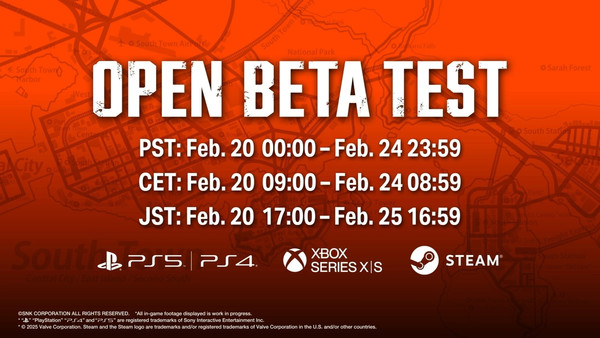
Finally, Fatal Fury: City of the Wolves had some open beta tests! These took place on February 20. I wasn't privy to these; at the time of writing, these haven't happened yet, so there's no news to report. I'm assuming punches were thrown and circles were quartered forward. Look forward to Fatal Fury: City of the Wolves releasing on April 21. Also, the discussion regarding Chun Li might have reminded some of you of that time Jackie Chan cosplayed Chun Li in a City Hunter film. As a reminder that, yes, that was a movie that was produced and distributed in theaters, here's the scene again.
Shuhei Yoshida Discusses Transition To Sony's Indie-Game Department; "I Had No Choice"
Sony is an important part of the game industry, bringing many important things to the table. Sony's hand in other multimedia efforts—music, television, and film—means that they bring a very different vibe to the table, one that's much more attuned to current pop culture trends. That attention to trends and tastes helped Sony secure an edge with the PlayStation in the 1990s. And one of those people who was key to all of that was Shuhei Yoshida. A longtime member of the PlayStation brand, Yoshida would eventually become President of SIE Worldwide Studios for Sony Interactive Entertainment from 2008 to 2019.

Yoshida nevertheless speaks very fondly of his time working with indie companies. He was dedicated to the position, and even now, having left Sony, he keeps in contact with many of them as an advisor and enjoys seeing them flourish in the industry. Many have nevertheless taken umbrage with the knowledge that Jim Ryan seemingly strong-armed Yoshida into the role after so many years of being a vital figure in the company.
The news comes hot on the heels of Sony re-evaluating Ryan's tenure as president of its PlayStation branch—and not for the better. The rash of live-service games he spearheaded—not to mention how many of them were all canceled—has been strongly criticized due to the wake of studio closures and lost revenue that they've caused, to say nothing of the sheer short-sightedness of it all (how is anyone going to play twelve live-service games?). The ongoing gag about "PlayStation having no games" finally has a name to pin to it; in the eyes of many, the PlayStation 5 has been a lame duck for so long because Jim Ryan wasted everyone's time trying to make a live service God of War. There are likely some external details to the whole thing—nothing is ever that cut and dry. However, optics are everything, and the legacy of Jim Ryan's time as president is negative in light of the brand's currently perceived weakness.
One thing that rankles my hide over the matter is the treatment of such an esteemed member of your team. Is this how you treat one of the masterminds behind your brand? This is how you reward someone who paved the way for your career in the first place. Imagine Nintendo laying off Gunpei Yokoi or Satoru Iwata. Imagine Ed Boone getting strong-armed into transitioning into battle royale games, or else he'd be axed from Mortal Kombat. Folks are already touchy about how developers get treated, the idea of someone so instrumental to a developer getting shunted off unceremoniously speaks to both a betrayal of the talent that made all this possible in the first place as well as a desperate slobbering for that last damn percentage.
Again, Yoshida made the best of it—he cannot be faulted for his services towards indie developers during his time at Sony, nor his continued support. Jim Ryan is out of his position as Sony Interactive's CEO. It'll take time for Sony to reconstruct things, but hopefully, they'll be able to. Still, what a way to showcase the absolute clown show backstage.
Nintendo Changes Up Their Currencies Ahead of Switch 2 Release
Quick poll: does anyone even use their Nintendo Gold currency? Because they're running out of time; this past week, Nintendo announced that they'd be discontinuing their Nintendo Gold Points service. The way the service worked was you'd buy a new Nintendo game (specifically, physical copies), and once you slapped the cartridge into your console, you'd earn 30 to 60 gold coins that you could use for stuff? The obvious use was for minor discounts on titles on the Nintendo eShop, but there wasn't much else to do with Gold Coins. I'm not saying it's good that Nintendo is discontinuing them, but I am saying that it was a bit of a non-starter of a service.
Nintendo has struggled with its rewards services—in the United States. Nintendo of Japan's Club Nintendo service would land people fun goodies, like unique games, collections, or even tchotchkes. You could get the entire collection of GBA releases of classic NES games in a lovely collector's edition set, or Tingle's Balloon Fight (a port of Balloon Fight for the Nintendo DS starring Tingle from The Legend of Zelda). The US offerings from Club Nintendo weren't as good; things like pins, fanny packs, or recolors of gaming accessories (you can see a full list of them here, prepare to be jealous of the Japanese offerings). My Nintendo was intended as a successor to Club Nintendo, and it was about the same. I've gotten a few cute coasters or pins from My Nintendo (my cell phone currently has a ring on the back shaped like the Hylian shield). But also, My Nintendo doesn't offer much else that would make running around collecting Nintendo Gold Coins all that vital—especially since all of those feelies relied upon Nintendo Platinum Coins, a completely different currency.
Considering how much gamers love their physical copies, you'd think Nintendo would offer more neat feelies like reversible covers, old-fashioned instruction manuals, faceplates for the Nintendo Switch's dock, or even special-edition stuff like an exclusive copy of Super Mario Odyssey with a button on the case that plays a "Wahoo~!" from Charles Martinet when you press it. I'm just blue-skying here. Shutting down the entire service makes sense, but I'd have liked to see some effort from Nintendo regarding those gold coins. Doesn't help that the news comes hand-in-hand with the announcement that Nintendo Switch vouchers won't be eligible for purchases of Nintendo Switch 2 titles. Throw us a bone here, these games are expensive—give us some kickback for buying them!
Isekai in Video Games
My colleague Miles has published a phenomenal article on the state of isekai anime in the greater anime industry. Other colleagues here at Anime News Network have also shared their favorite isekai anime. That makes it as good a time as any to discuss isekai in video games. Isekai, it must be urged, isn't new; isekai was the realm of shōjo manga for ages and ages (see: Red River and Magic Knight Rayearth). But what about isekai in gaming? Well, you could probably point to a few good examples. But you'd have to look past the obvious video game adaptations of isekai novels—those are way too easy.
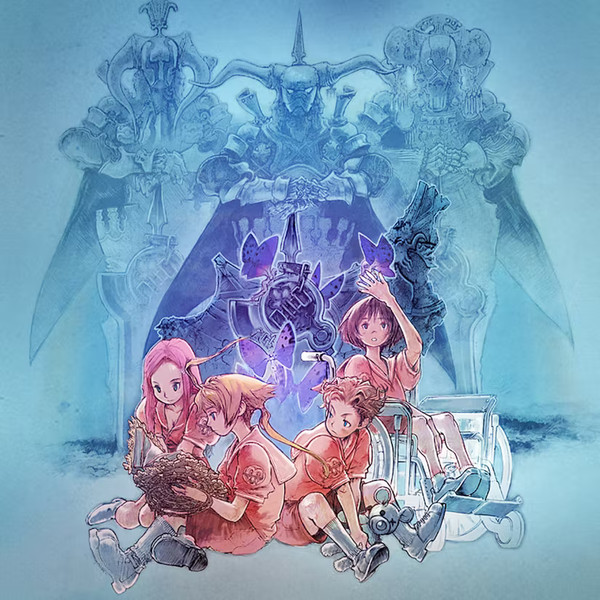
Right away, one of the best examples of isekai in gaming (and one of my personal favorites) is Final Fantasy Tactics Advance. This one had a bit of grousing about it when Square originally released it in 2003; the original Final Fantasy Tactics is one of the most beloved Final Fantasy games of all time, establishing the setting of Ivalice and featuring a phenomenal story from Yasumi Matsuno about the nature of war, religion as a tool of oppression, and the transitory nature of historical figures (also, all of that being manipulated by demons like Dungeons & Dragons baddies). Final Fantasy Tactics Advance took place in a version of Ivalice, but it ditched much of the intense political writing in favor of a more child-friendly story. On the other hand: it introduced Viera to Final Fantasy.
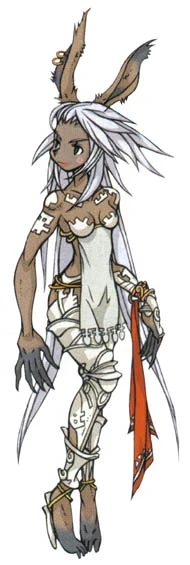
There's a lot of cynical rewriting of Tactics Advance that tries to frame Marche as the villain because of his acts destroying Ivalice (even though it was later confirmed to be an illusion of the real location), or that Marche consigns his friends to misery in the real world. It's all "Steven Universe dies of cancer" garbage. A lot of modern isekai don't bother with the idea of protagonists wanting to return home. They don't have family or friends to speak of back home, and the power fantasy inherent to isekai means that the fantasy world is immediately a better deal than anything back home. Tactics Advance doesn't work by those rules; Marche, Doned, and Ritz still have parents back home, while Mewt throws tantrums at the thought of this fictional world not being entirely at his whims. As Marche points out, it's all escapism—it's not healthy, especially not for everyone else who's forced to live under an illusion they didn't ask for. Ritz wants to avoid the real world because her hair is pure white at home, and she remembers her mother crying daily at the notion of having to dye it a "normal" color.
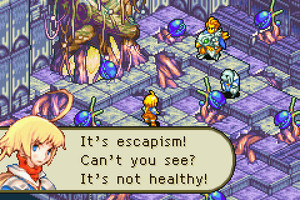
It's Mewt who has to face the worst of it; in his rejection of the real world, he locks his father into a position of authority as the Head Judge while retreating into the arms of an illusion of his departed mother (actually an antediluvian demon sealed into the Eldritch Tome). It's heartbreaking, forcing Mewt to confront his mother's death, but it's the only way for him to grow up as a rational adult. More importantly, it works out for Mewt and his dad (also, his dad is the game-requisite "Cid"): Mewt becomes good friends with Marche, and Cid manages to overcome his grief and get his act together. Final Fantasy Tactics A2 eventually returns to the idea of a fictional Ivalice explored from within a book—which still belongs to a fully-grown Mewt. But the story is a lot more disjointed and a bit more generic summer adventure in a fantasy world than anything else.
I touched upon a detail with Final Fantasy Tactics Advance, wherein the journey in the fictional Ivalice helps the kids learn to cope with matters in the real world. This is a major part of isekai; it's typical for some aspect of the fantasy world to serve as a stand-in for some matter the protagonist is confronting in the real world. A lot of folks are probably shouting, "Oh, like Ni no Kuni!" at me through the screen. Yes, Ni no Kuni would count!
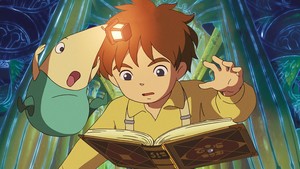
While Ni no Kuni's PS3 release is the one most people are familiar with, the game first saw a release on the Nintendo DS. This version of the game was released with a physical spellbook needed to progress through the game; production costs made localizing this version prohibitive. The PS3 version featured a digital version of the spellbook, although the special edition release of that version did offer a physical version of the spellbook. The spellbook was also packed with a ton of in-game lore and backstory, so at the very least, I can't fault Level-5 for their worldbuilding. Where Final Fantasy Tactics Advance allows Marche to save everyone from their problems, Ni no Kuni is decidedly far more bittersweet in its approach. I think it's worth not spoiling, in this case, but suffice to say that Ni no Kuni also inherits Studio Ghibli's emotional maturity in a lot of ways.
Let's talk about some of the bigger franchises out there. Pokémon is a franchise that has put in effort distancing itself from real-world influences; while its earlier games were set in regions inspired by Japanese provinces ("Kanto" is the real-world name for the greater Tokyo area) and its newer regions are strongly based off of real-world countries (like Alola being based off of Hawai'i or Galar off of the United Kingdom), details like the Lunar Landing have been scrubbed to preserve the games location as being similar to our own world, but not identical. Regardless, Pokémon mostly sticks to a fairly realistic setting depicting people like us interacting with Pokémon in various ways. Even if the mainline games are focused on trainers' lives, much of the games revolve around people and how they live with Pokémon. Many of the side-games lean into this aspect, with titles like Pokémon Ranger illustrating the efforts of maintaining Pokémon habitats, or Pokémon Conquest illustrating historical conflicts with Pokémon tossed into the mix (turns out, Oda Nobunaga having a lightning-breathing dragon at his side is awesome). And then you have the side-media like the Poké-toons or Pokémon Concierge illustrating day-to-day life with Pokémon, or the short The Slugma-Powered House. The most fantastical thing tends to be the abilities of Pokémon themselves.
But what if you woke up one morning from unsettling dreams and found yourself changed into a Pocket Monster?!
This is part of the appeal of the Pokémon Mystery Dungeon games. Each of the games stars a child who finds themselves transported into a fantasy world, turned into a Pokémon—usually one of the starters, or one of the other popular choices like Eevee or Meowth. No other humans appear in the games; instead, Pokémon live in little communities where bigger Pokémon watch over them—or rule them.
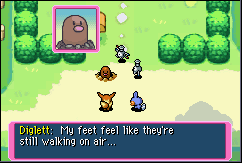
On the digital side of things, the nature of Digimon as a franchise means that on some level, the games almost need to be isekai. The original Digimon Adventure was an isekai, with the seven Digidestined getting whisked away to the Digital World on a fateful trip to summer camp. The games are a tougher call because all of the games are so inconsistent with their genres (ranging from monster-raising sims to dungeon crawlers to racing games), and might not even deal with the notion of traveling to another world. You, as a character, might be a human who's always lived in the Digital World, as with Digimon World 2. The inconsistent nature of the Digital World also means that even if a game is about traveling to the place, you might not be stuck there. The recent Digimon Story: Cyber Sleuth is a good example: the games detail a phenomenon called "Digital Shift," wherein certain areas in real-world Tokyo become half-digitized, allowing Digimon to manifest in the real world. While we don't know much about the upcoming Digimon Story: Time Stranger, it seems to continue the idea, albeit with a few opportunities to visit areas within the Digital World.
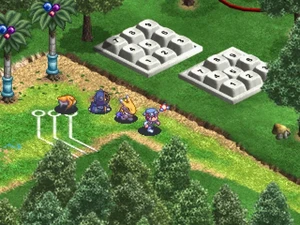
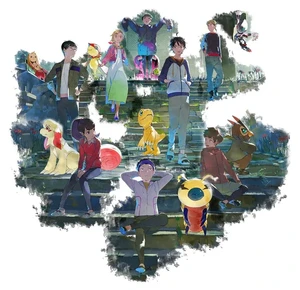
These are, of course, just a sampling of the many kinds of isekai games you can find. The idea has been around forever. Secret of Evermore on the Super Nintendo explored the idea of your protagonist being flung around different periods, their hapless dog changing depending on the epoch. Chrono Cross toyed around with the idea, forcing protagonist Serge to flip between two worlds: his home world, and a version of the world where he died as a child. Brave Story: New Traveller plays with the idea further: a spin-off of the famed isekai novel, Brave Story, New Traveller takes place in the same world of Vision and even lets you meet some of the original cast from the novel! The Demikids spin-offs from the Shin Megami Tensei games allow you to explore the Demon realms of Dem and Valhalla as you fight off an invading force. Even way back with the Ultima games, the Avatar was intended to be a literal stand-in for the player, implying that Lord British would summon you whenever the land needed help. Even outside of the obvious video game adaptations of isekai properties, traveling to fantasy worlds and finding your way home is a core part of games, and always will be.
Let's wrap up with some quick tidbits
That'll do it for this week. I hope you guys enjoy some of the bits of long-form editorial stuff I've been trying lately with This Week in Games! The "isekai in gaming" section was one I've been working on for a few weeks now, and I intended to tie in with the isekai feature my colleagues wrote. Last week's Sony State of Play stream threw a wrench into that, pre-empting it a bit. Feel free to suggest other topics you'd like to hear about! Hopefully, you guys have a fun weekend. Be good to each other, I'll see you in seven.
This Week In Games! is written from idyllic Portland by Jean-Karlo Lemus. When not collaborating with Anime News Network, Jean-Karlo can be found playing JRPGs, eating popcorn, watching v-tubers, and tokusatsu. You can keep up with him at @ventcard.bsky.social.
discuss this in the forum (28 posts) |